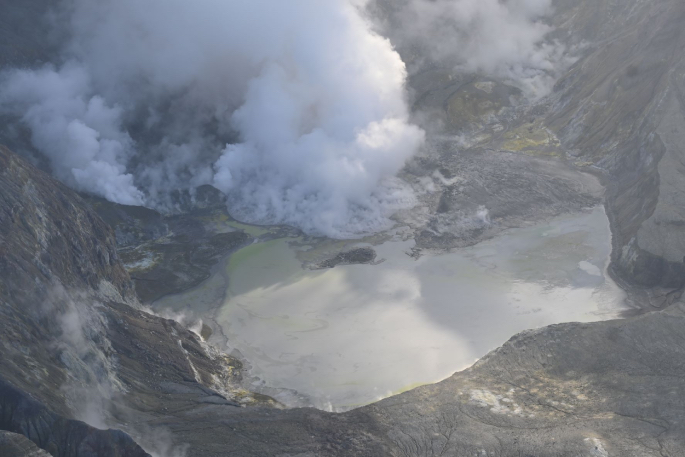Volcanic unrest continues at Whakaari/White Island, says Duty Volcanologist Paul Jarvis, in the latest volcanic activity bulletin published by GeoNet.
As of Wednesday, the Volcanic Alert Level remains at Level 2 with moderate to heightened unrest, and the Aviation Colour Code remains Yellow.
Paul says no clear eruptive activity has been observed at Whakaari/White Island since Saturday, May 25.
"We have conducted further gas and observation flights and measured an elevated magmatic gas output," says Paul.
"Since the most recent observed eruption of Whakaari/White Island on Saturday 25 May, we have been watching the volcano closely.
"From our web camera in Whakatane, we have observed typical steam and gas emissions from the island when views are clear.
"Additionally, our latest gas and observation flight on Friday 31 May has confirmed that there has been no further significant eruptive activity."
Paul says vivid white steam and gas continue to be emitted from numerous vents.
"We have not seen any volcanic ash emissions from the active vents or in web camera images. However, we cannot rule out any low-level activity that is not visible during our flights or from the mainland."
Analysis of data collected during the gas flight on May 31 has confirmed that the volcano is continuing to emit elevated levels of magmatic gas compared to observations prior to the eruptions in May.
In particular, emissions of sulphur dioxide (SO2) are at some of the highest levels since measurements began at Whakaari/White Island in 2003.
The measured gas compositions indicate that magma (molten rock) is degassing beneath the volcano.
Paul says satellite imagery captured on May 27 shows there has been no significant ground deformation in the crater, indicating that magma is not accumulating in the shallow subsurface.
"Although the Volcanic Alert Level remains at Level 2, eruptions can still occur with little or no warning," says Paul.
"This is particularly the case following the minor eruptions 11-12 days ago and the presence of elevated magmatic gas emissions.
"As we have no sensors on the island, we are currently relying on webcams and satellite imagery, complemented with gas and observation flights to assess the volcanic activity."
Paul says further gas and observation flights will be conducted by GNS Science volcanologists over the following days and weeks to maintain a close eye on activity levels.
"The Volcanic Alert Level reflects the current level of volcanic unrest or activity and is not a forecast of future activity.
"While Volcanic Alert Level 2 is mostly associated with volcanic unrest hazards (including discharge of steam and hot volcanic gases, earthquakes, landslides, and hydrothermal activity), the potential for eruption hazards remains."
GNS Science’s National Geohazards Monitoring Centre and Volcano Monitoring Group, through the GeoNet programme, will continue to closely monitor Whakaari/White Island for further changes in unrest.
Further information about the Volcanic Alert Levels and what they mean can be found here.
More information on the recent minor eruptions can be found here.



0 comments
Leave a Comment
You must be logged in to make a comment.